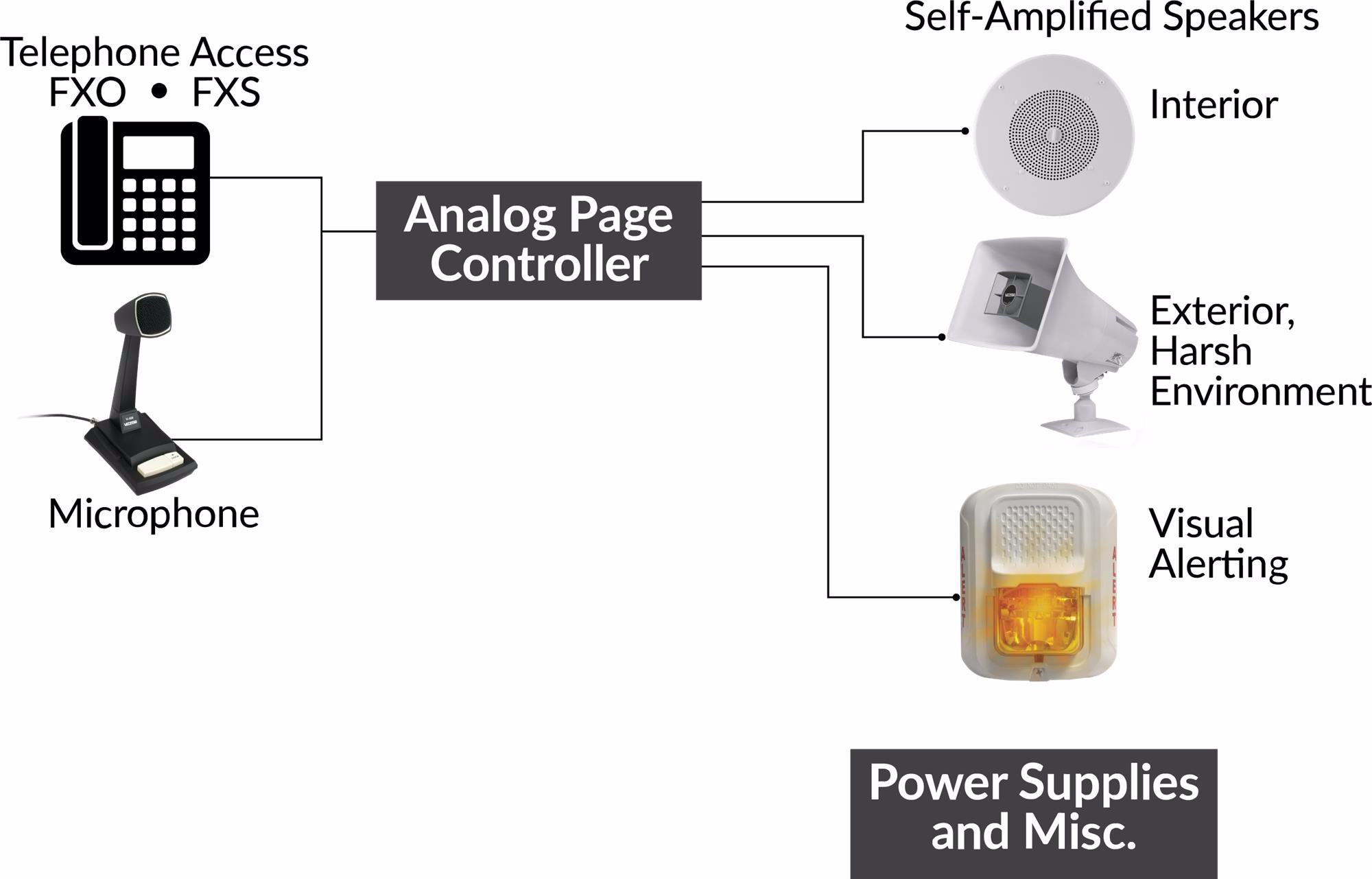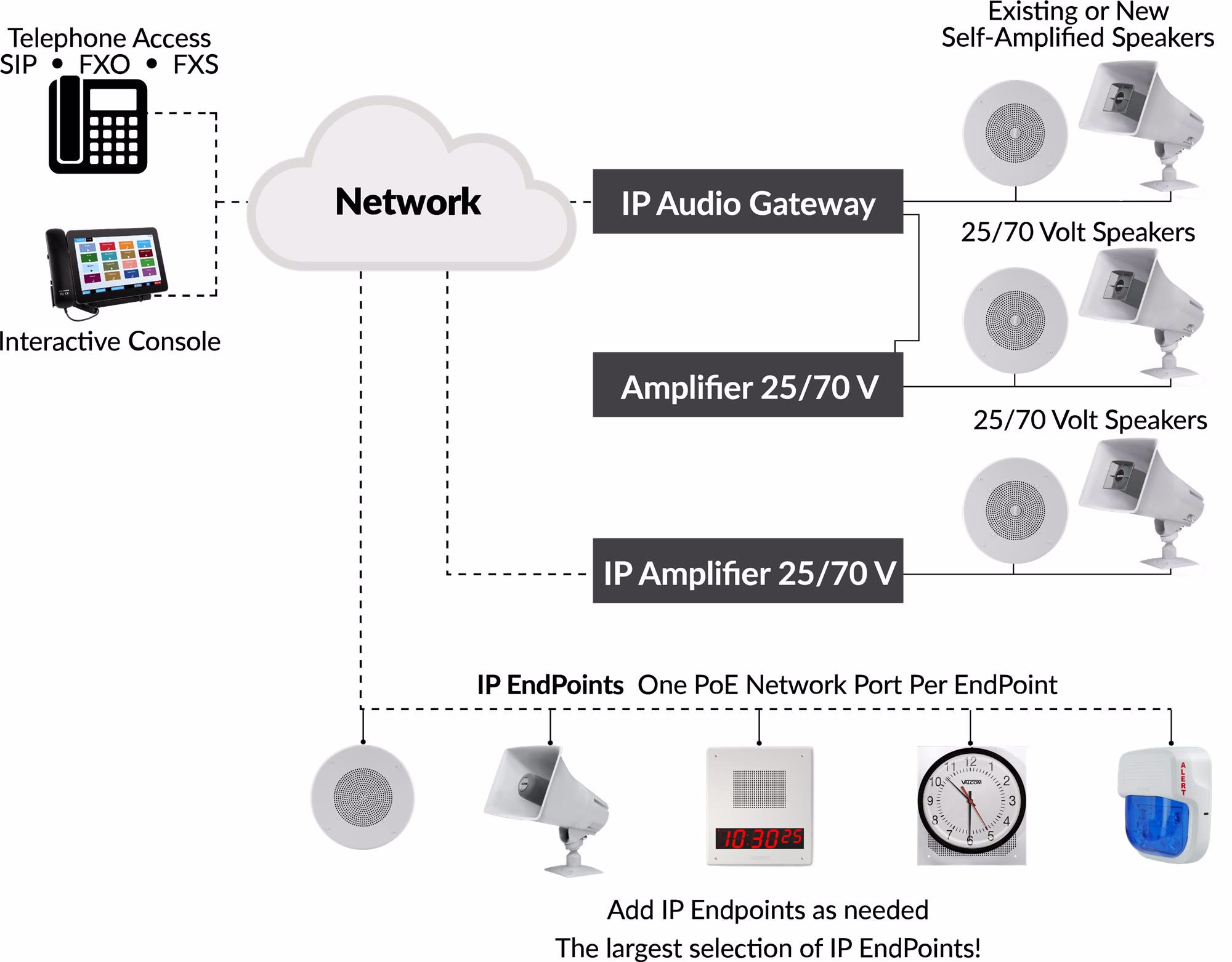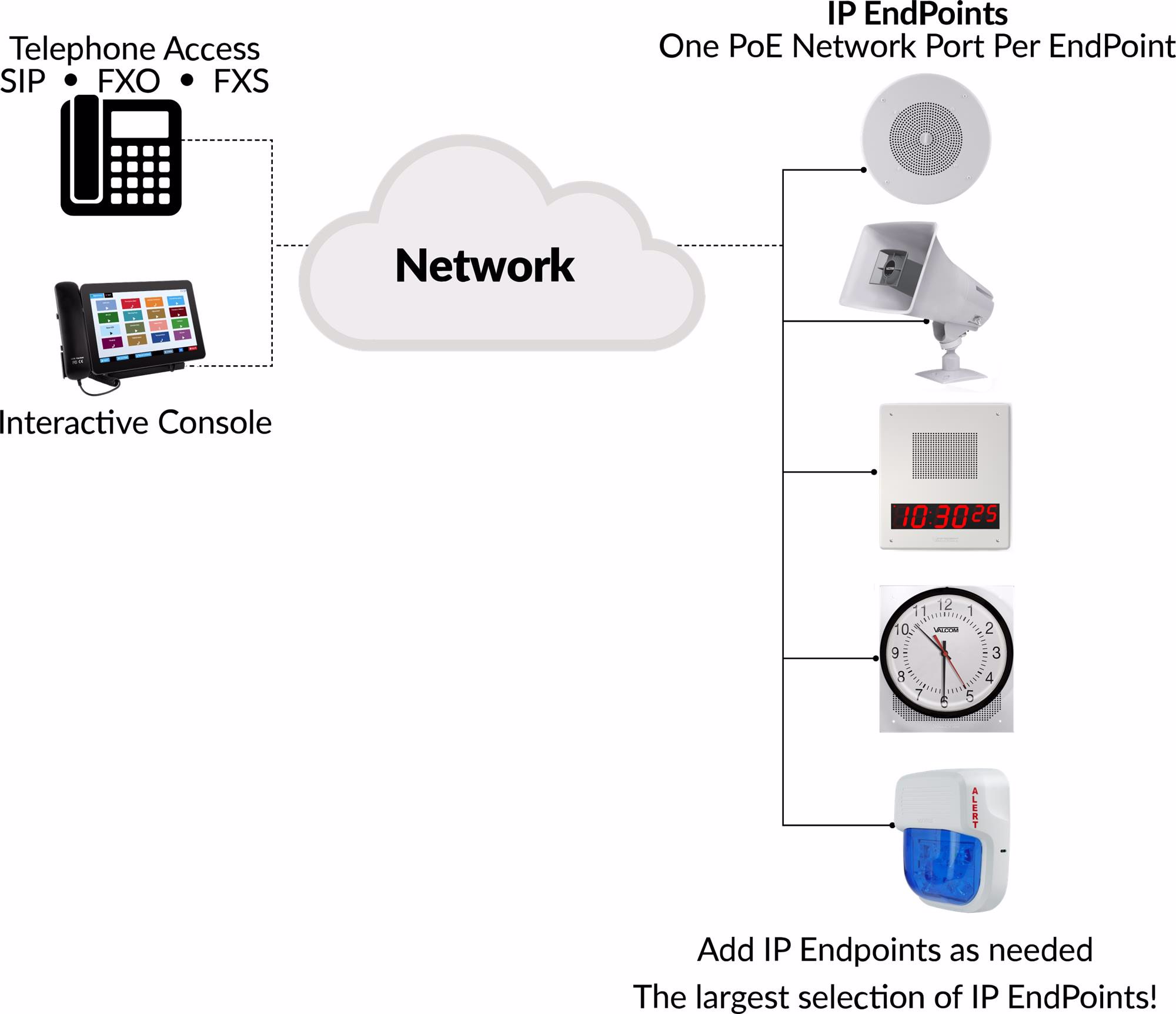Emergency Paging
Valcom's on-premise emergency communications notification system integrates software and IP endpoints, allowing it to deploy live or pre-recorded emergency messages anywhere inside or around your campus with one click. This capability enables your organization to quickly reach people with important information so they can take protective action.

Analog
Analog emergency paging systems require dedicated proprietary cabling and are often referred to as “legacy”. Dedicated cabling must be homerun from speaker(s) back to the “headend”. An analog system can be stand alone using a basic 2500 type phone or a microphone to make public address broadcast. Connection to a telephone system for access must use a central office line port, FXO, or page port and usually requires a Valcom paging control unit. Programming or set-up is manual and any changes including speaker audio volumes, zoning, etc. require physical and/or cable changes. This type system is often used for small buildings or areas of coverage and is typically 1 to 3 zones.

IP Backbone / Retrofit
IP backbone / retrofit emergency paging systems are a combination of analog speakers and cabling connected IP network audio gateways on existing or new network infrastructures. This type system allows use of existing analog infrastructure / speakers, and provides the advantage of migration to IP control. IP backbone system deployment is much faster than analog and offers the benefit of using software to make changes such as volume levels, zoning, etc. Access to make emergency page announcements can be stand alone phones or microphones, as well as FXO, FXS, IP Interactive Consoles, and SIP. IP backbone systems also provide the ability to connect IP speaker/horn endpoints that broadcast simultaneously with the analog speakers. This type system is often used for larger buildings, multiple buildings, or large areas of coverage and is typically 1 to 200 zones.

Full IP
Full IP emergency paging systems are modern, flexible, easy to install, and utilize new or existing network infrastructures. Each endpoint including speakers and horns simply plug into a PoE network switch. All communications and power is provided with this single PoE port which makes installations fast and simple. Set-up and programming is 100% software controlled and managed. Making changes is simple and done with the click of a mouse including speaker volume levels, zoning, and all call page broadcast. Access can be stand alone phones, microphones, IP Interactive Consoles, FXO, FXS, and SIP. A full IP system has no limits on zones and can be expanded without the need to purchase new headend equipment. This type system is used in all type applications including small buildings, extremely large buildings, multi-buildings, multi-site, and multi-campus. Full IP systems can be linked together for enterprise customers and controlled from a central location.





